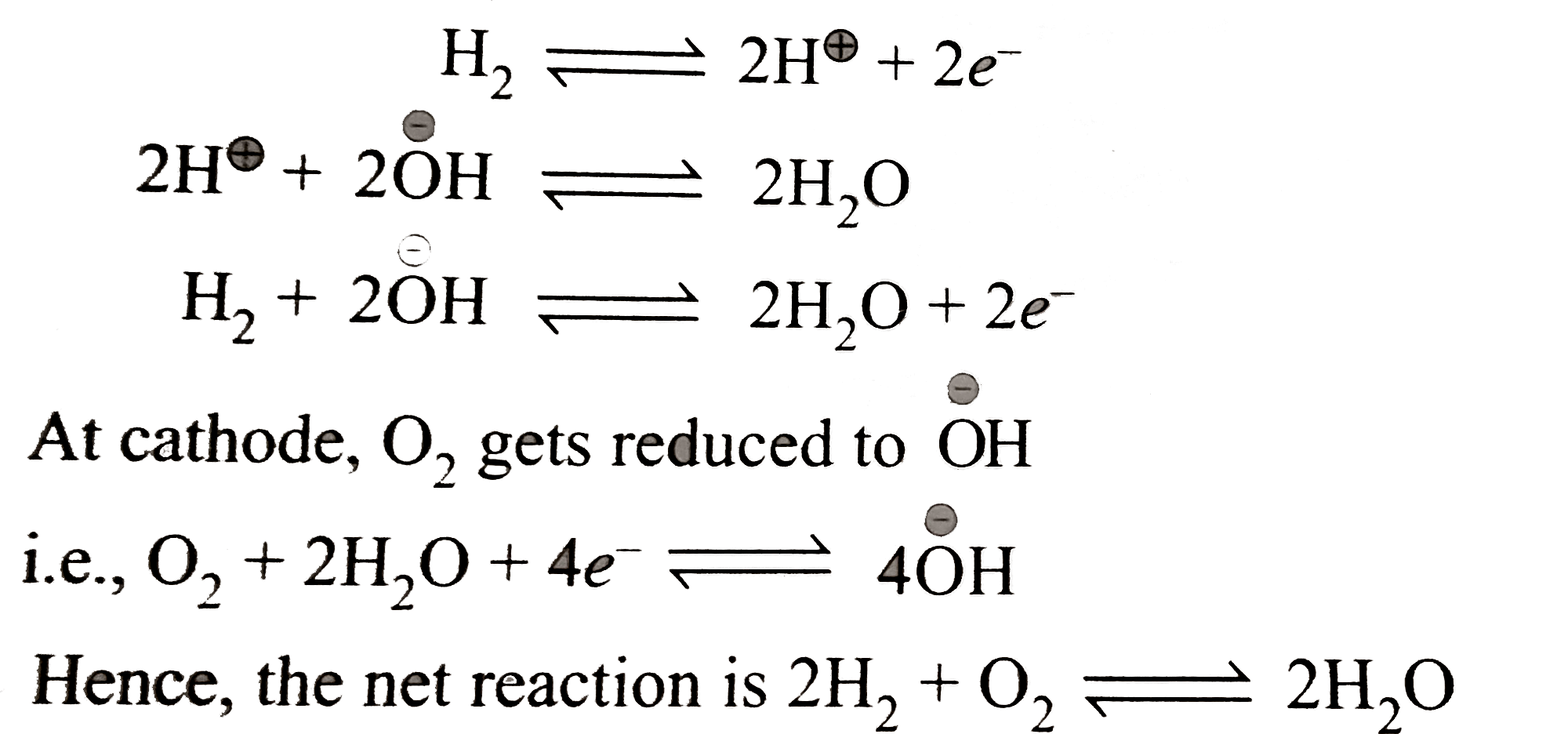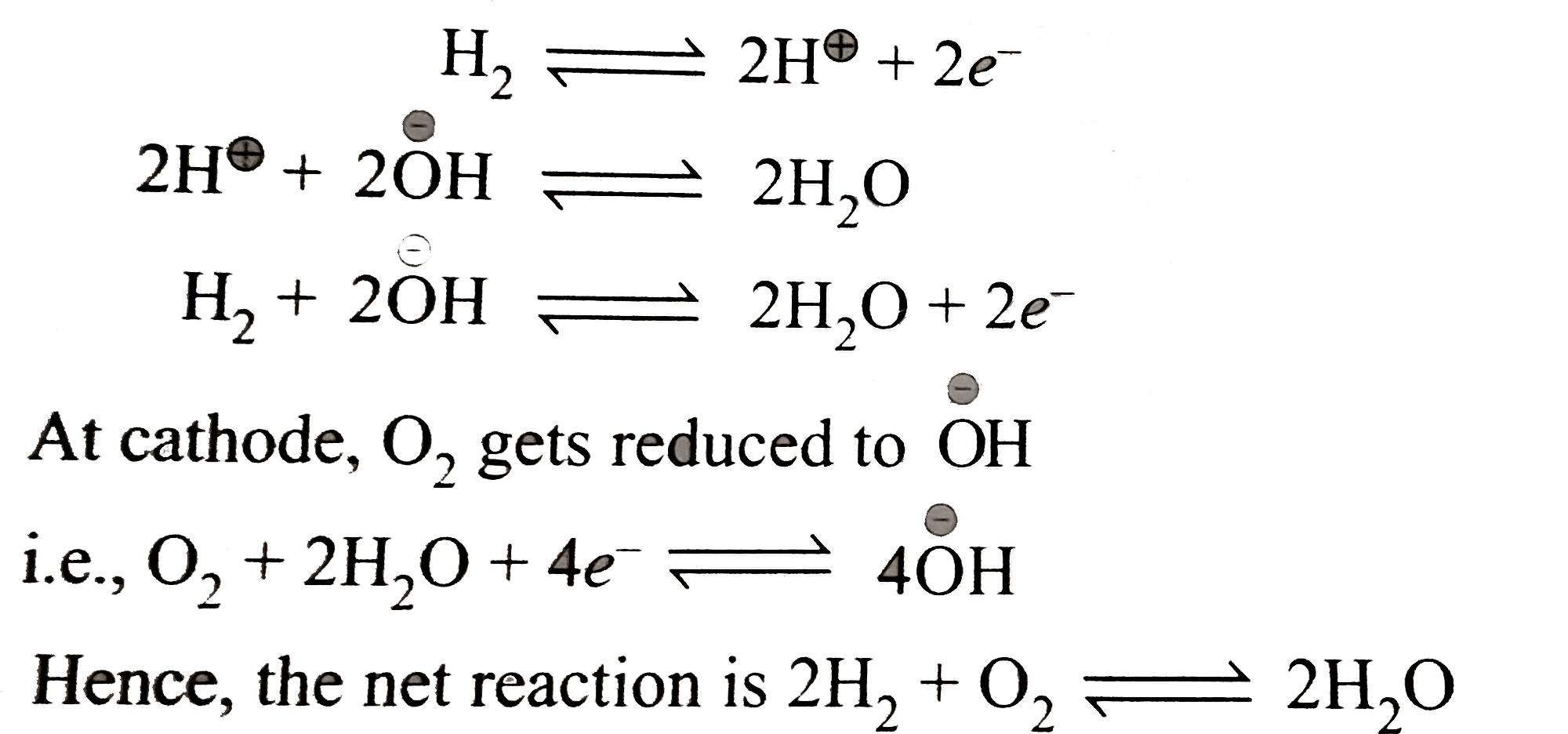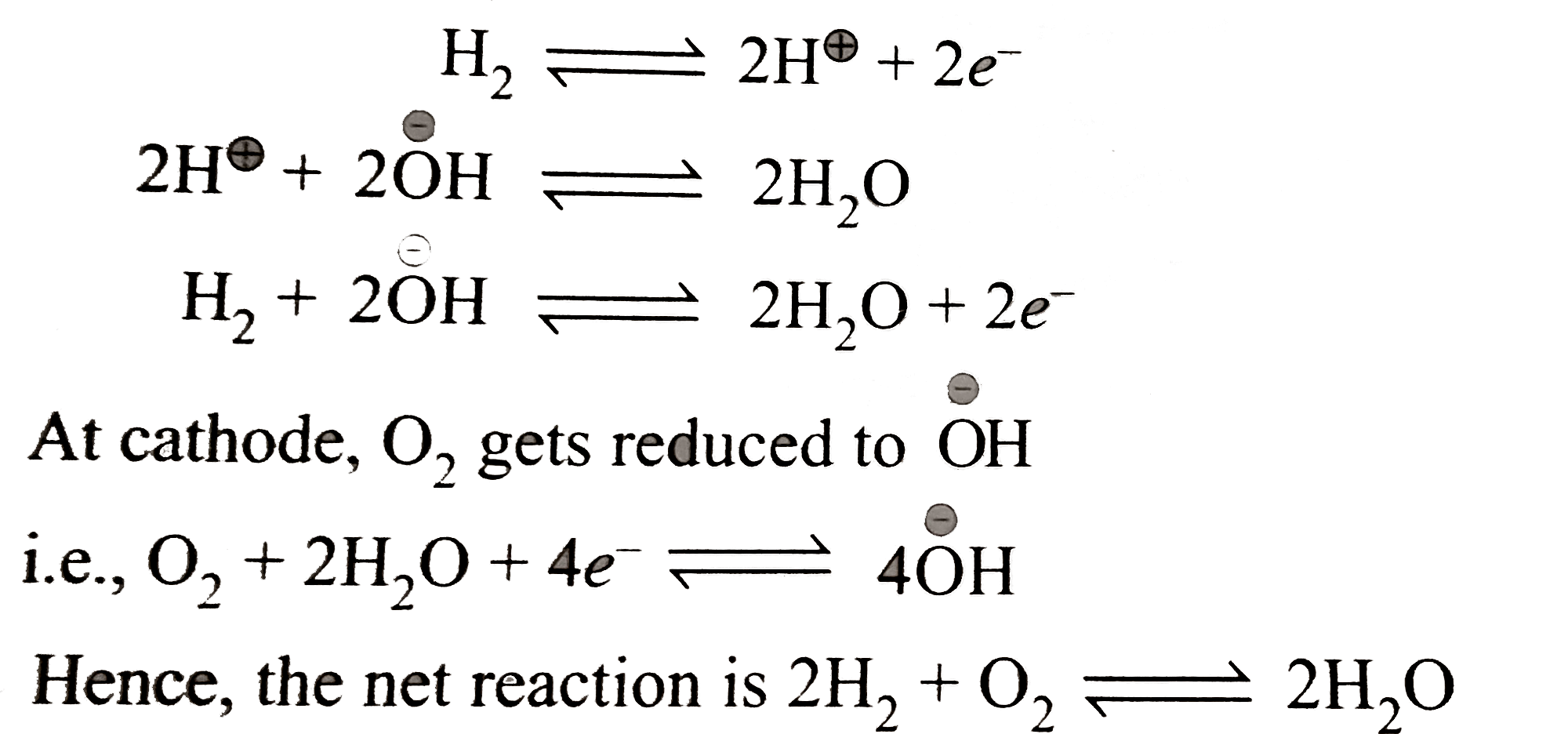Purpose of hydrogen -oxygen fuel cell is to
Generate heat
Ccreate potential difference
Produce high purity water
Remove adsorbed oxygen from electrode surface
The correct Answer is:B
Step by step video, text & image solution for Purpose of hydrogen -oxygen fuel cell is to by Chemistry experts to help you in doubts & scoring excellent marks in Class 12 exams.
Updated on:21/07/2023Similar Questions
Knowledge Check
A fuel cell is
Athe voltaic cells in which discontinuous supply of fuels are send at anode to give oxidationBthe voltaic cell in which fuels such as : CH4,H2,CO are used up at anodeCit involves the reactions of H2−O2 fuel cell such as
Cathode : 2H2+4OH−→4H2O(l)+4e
Anode : O2+2H2O(l)+4e→4OH−Dthe efficiency of a H2−O2 fuel cell is very lowThe overall reactions of a hydrogen -oxygen fuel cell is
A2H2(g)+O2(g)→2H2O(l)B2H2(g)+4OH(aq)→4H2O(l)+4e−CO2(g)+2H2O(l)+4e−→4OH−(aq)D4OH−(aq)+4e−→2H2O(l)The effciency of the hydrogen-oxygen fuel cell is about
A0.2B0.4C0.7D0.9
The middle compartment of the hydrogen-oxygen fuel cell contains, hot aqueous solution of _________.
View SolutionFuel cells : Fuel cells are galvanic cells in which the chemical energy of fuel cell is directly converted into electrical energy. A type of fuel cell is a hydrogen − oxygen fuel cell. It consists of two electrodes made up of two porous graphite impregnated with a catalyst ( platinum, silver, or metal oxide ). The electrodes are placed in aqueous solution of NaOH . Oxygen and hydrogen are continuously fed into the cell. Hydrogen gets oxidized to H⊕ which is neutralized by c−OH,i.e., anodic reaction.

At cathode, O2 gets reduced to c−OH

Hence, the net reaction is
The overall reaction has
ΔH=−285.6kJmol−1 and ΔG=−237.4kJmol−1 at 25∘C
If the cell voltage is 1.23V for the H2−O2 fuel cell and for the half cell :
View SolutionFuel cells : Fuel cells are galvanic cells in which the chemical energy of fuel cell is directly converted into electrical energy. A type of fuel cell is a hydrogen − oxygen fuel cell. It consists of two electrodes made up of two porous graphite impregnated with a catalyst ( platinum, silver, or metal oxide ). The electrodes are placed in aqueous solution of NaOH . Oxygen and hydrogen are continuously fed into the cell. Hydrogen gets oxidized to H⊕ which is neutralized by c−OH,i.e., anodic reaction.

At cathode, O2 gets reduced to c−OH
Hence, the net reaction is
The overall reaction has
ΔH=−285.6kJmol−1 and ΔG=−237.4kJmol−1 at 25∘C
What is the value of ΔSc− for the fuel cell at 25∘C?
View SolutionFuel cells : Fuel cells are galvanic cells in which the chemical energy of fuel cell is directly converted into electrical energy. A type of fuel cell is a hydrogen − oxygen fuel cell. It consists of two electrodes made up of two porous graphite impregnated with a catalyst ( platinum, silver, or metal oxide ). The electrodes are placed in aqueous solution of NaOH . Oxygen and hydrogen are continuously fed into the cell. Hydrogen gets oxidized to H⊕ which is neutralized by c−OH,i.e., anodic reaction.

At cathode, O2 gets reduced to c−OH
Hence, the net reaction is
The overall reaction has
ΔH=−285.6kJmol−1 and ΔG=−237.4kJmol−1 at 25∘C
Suppose the concentration of hydroxide ioin in the cell is doubled, then the cell voltage will be
View SolutionFor hydrogen oxygen fuel cell with reaction
2H2(g)+O2(g)→2H2O(l)
ΔGc−f(H2O)=−237.2kJmol−1. Hence, EMF of the fuel cell is
View Solution
